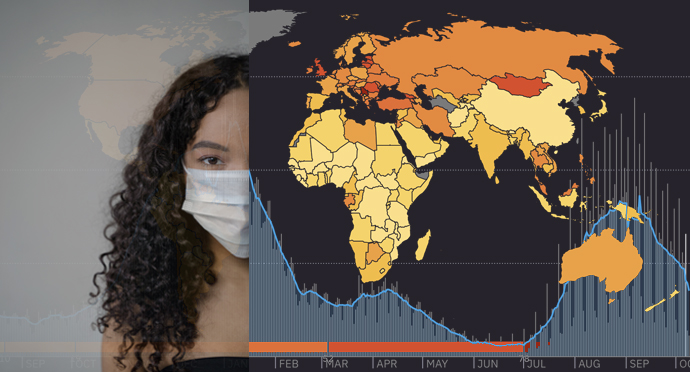Deciding to enroll in a master’s degree in public health right when a pandemic sweeps across America is wonderful and horrifying. Whenever I meet someone, and they learn that I am studying a science that is extremely polarizing, I get the question “what is that like?”
This pandemic is one of the greatest, scariest, and most complex learning experiences life could ever throw my way. Public Health is a broad topic, but I decided to dive headfirst into one of the more romanticized pillars of Public Health: epidemiology.
As students, we get to peek behind the curtain to see how all these numbers we see on the news about COVID-19 are generated and, most importantly, what these numbers really mean. We get to see how these numbers incorporate into decisions in theory. Not only do we get to learn theory, we learn the theory in parallel with seeing epidemiology in practice, in real-time, and putting what we are currently learning to use.
Diving into Covid-19: Numbers Don’t Lie
We’ve been dissecting news articles and peer-reviewed studies about COVID-19 so we can digest and incorporate what we learned in class to make sense of situations at hand.
This comes with fear and aggravation as we have seen the national response unfold since late 2019. From resistances to wearing masks and getting vaccines to the numerous ways society has successfully adapted to these resistances and challenges.
We have learned rather quickly that strategies on how to deal with issues will always be up for a political debate, yet the numbers themselves should never be twisted and turned into something they are not. We have seen how this abuse of data can cause irreparable damage. However, we saw the immense success of what evidence-based practice can accomplish with re-opening of economies across the country and the success communities felt with the reduction in community spread of this disease.
Perseverance, Hope and the Love of Science
Even through the successes, we still have a long way to go, but these triumphs bring students of Public Health hope, reinvigoration to persevere, and love for the science of Public Health and its growing importance in everyone’s lives. Not only have I witnessed the stuff in which legends of science are made, I get to be part of the next generation that is cultivated from this hardship.
The COVID-19 pandemic is a big part of all of our lives, and it is something we will remember forever. With all the challenges internally and externally I have felt along this road through the pandemic, it has strengthened my resolve and passion to study public health. While we still have a long way to go, we are all in this together.
The World is a Responsibility, Not a Punishment
I cannot help but think about one of my favorite spoken word poems: “Shoulders” by Canadian poet Shane Koyczan (it’s definitely worth the trip to YouTube). Shane Koyczan likens global crisis to the Greek titan Atlas “Atlas is caught between two different telling’s of his story. In the first he leads a rebellion against Olympus and is forced to hold the heavens on his shoulders for eternity. In the second story, he is chosen to be the guardian of the pillars that hold up the Earth and sky. I prefer the second story. It means the world is not a punishment but, rather, a responsibility.”
Koyczan elaborates that Atlas is not just one person, he symbolizes humanity. We have a responsibility to one another because we are all connected. When we come together and everyone shoulders the burden of a crisis, we can turn “impossible” into “somehow.” And I think, after having observed everything this last year, it gives me hope that there are people willing to shoulder the burden together to overcome seemingly impossible tasks.
If Atlas were real, I’m sure he would be proud with how far we’ve come. I am.
